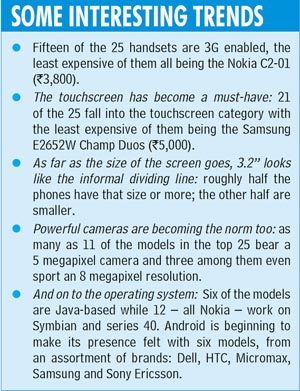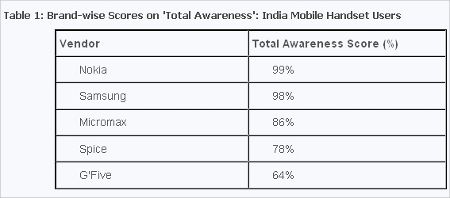With mobile technology changing at a much faster pace, the average lifespan of a mobile phone has come down to a year or so. Some even consider changing their handsets within a year!
Considering that India alone has about 700 million mobile users, the total e-waste generated from these junk handsets turns out to be huge.
A report released by the UN Environment Programme (UNEP) in February last year stated that the total e-waste generated in India is about 4.3 lakh tonnes, of which mobile phones contribute about 1,700 tonnes.
E-waste based on the obsolescence rate (rate at which electronic products become obsolete) in India is expected to exceed 8 lakh tonnes per annum by 2012. Mobile phones constitute a major component of this waste.
Not surprisingly, WWF India says that by recycling our phone we will be able to save 240,000 tonnes of raw material per year.
Most people in India keep phones lying unused at their homes or sell them to the local scrap man. At some places in Delhi, printed circuit boards (PCBs) of mobile phones are sold to scrap dealers for as low as Rs 6 per piece. And it’s not just PCBs; almost all parts of a phone are up for sale. Batteries and fibre bodies are sold by the dozen. These are then burnt, usually in slum areas, in the open air. What remains are a few grams of copper and other metals. This process does irreparable damage to the environment and to the health of people inhaling the toxic fumes these materials produce.
Cellphones contain many different substances that are toxic and potentially hazardous to the environment and health. These include ferrous and non-ferrous metals, lead, magnesium, copper, mercury, plastics, glass, liquid crystals, barium, concrete, ceramics, rubber, arsenic etc.
Hence, it becomes crucial that m-waste is disposed of in a proper manner. Also, after recycling, the materials obtained can be used to make useful items such as utensils and benches. In fact, metals extracted from e-waste are resold in the commodity market by recycling agencies not only in India but worldwide.
But have you ever wondered what happens to the phone at it goes through a proper recycling programme?
There are several myths associated with mobile phone recycling, which actually hold people back from participating in it.
Some believe that handset makers take out old parts and use them in new phones to reduce manufacturing cost, but the truth is that a phone is recycled for the materials of which it is made.
Mobile phones are made of materials like plastic and metal. These are extracted and then used to make new device parts.
Almost 80 per cent of a cellphone can be recycled and the material obtained can then be used to manufacture parts for a new handset, and also for making things like car bumpers and traffic cones. Apart from that, the glass, metals and plastics are fully recyclable.
Today, almost all major handset manufacturers such as Samsung, Nokia, Apple, and LG, run mobile phone recycling programmes.
Nokia phones are adjudged the greenest due to its recycling facilities.
Recycling not only helps preserve the environment, it also reduces the cost of new devices. A steady infusion of raw materials in the market makes these materials cheap and readily available to manufacturers.
Recycling is not just the manufacturer’s responsibility; and it cannot be imposed on the government. Recycling is something which is everyone’s responsibility and each one should actively participate in it.



 With different figures and characters such as dogs and cats, this application is sure to be liked by your little ones and will keep them glued to one place.
With different figures and characters such as dogs and cats, this application is sure to be liked by your little ones and will keep them glued to one place.

 The survey has found that the mobile phone users now don’t consider touchscreen and
The survey has found that the mobile phone users now don’t consider touchscreen and  Emerging players are trying and tapping buyers in large numbers and in turn giving tough competition to established brands. The reason behind it is not just the innovation or the value add these brands are giving but after sales service is a critical element in making a buying decision.
Emerging players are trying and tapping buyers in large numbers and in turn giving tough competition to established brands. The reason behind it is not just the innovation or the value add these brands are giving but after sales service is a critical element in making a buying decision.